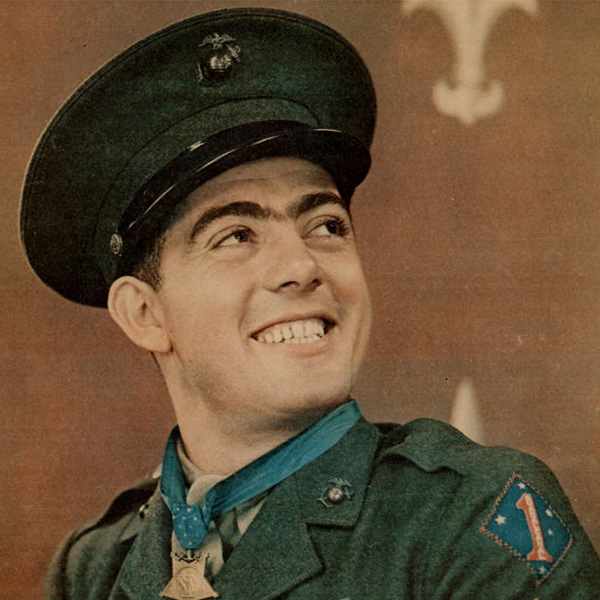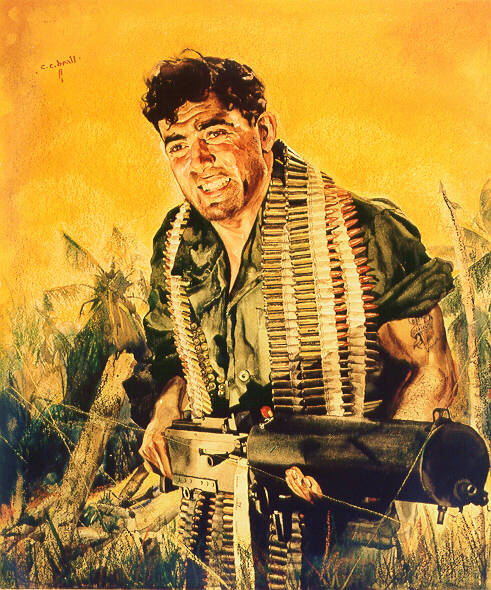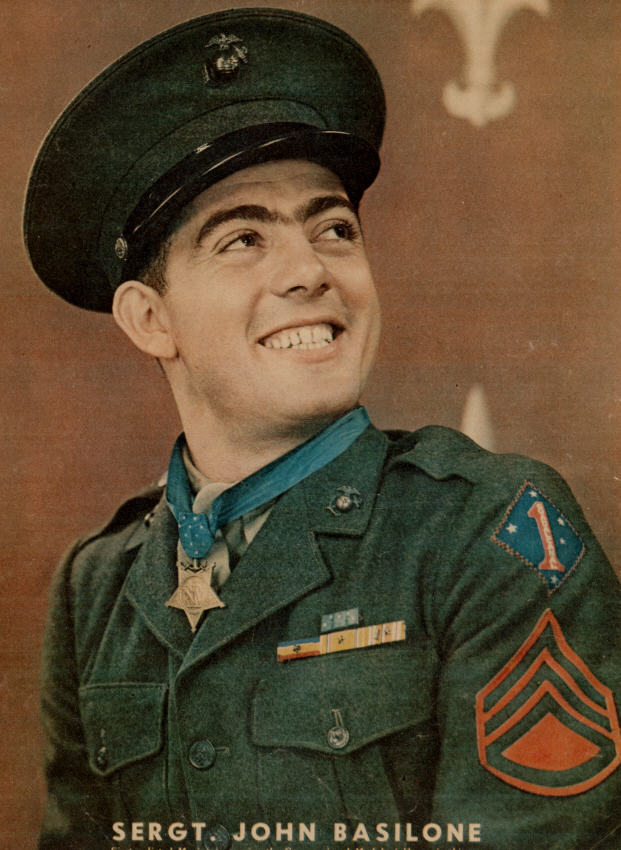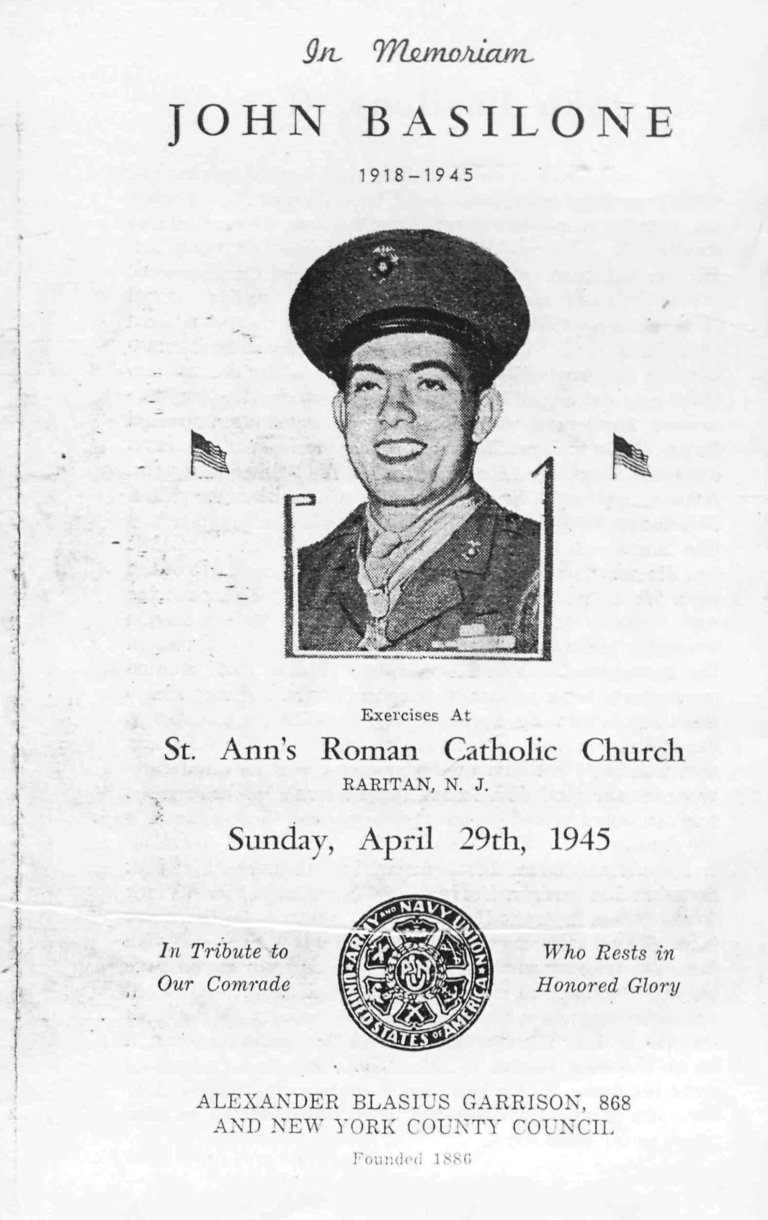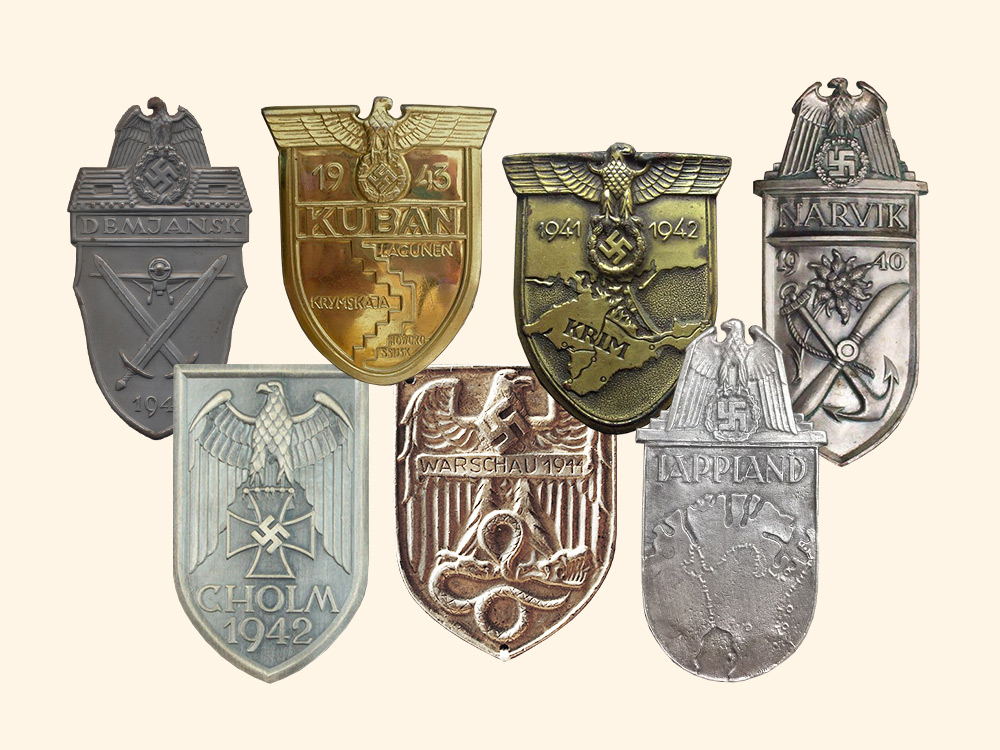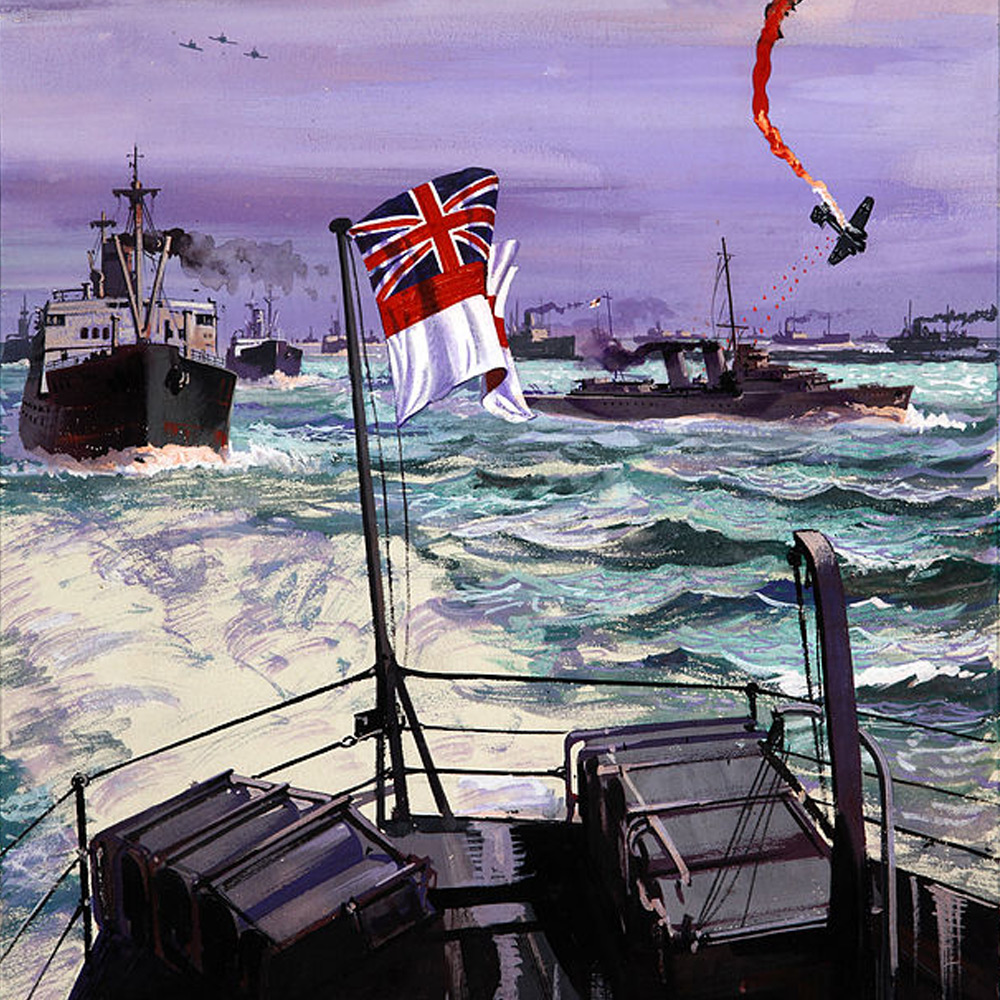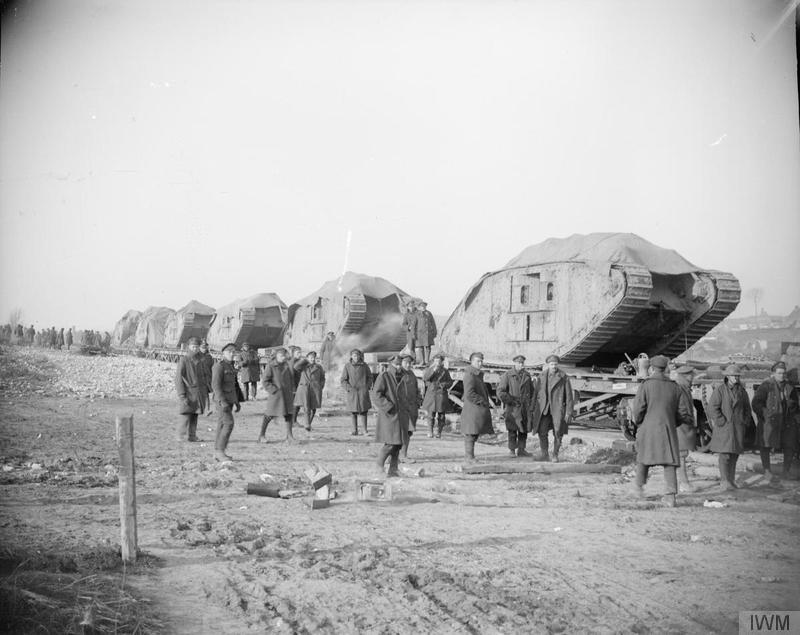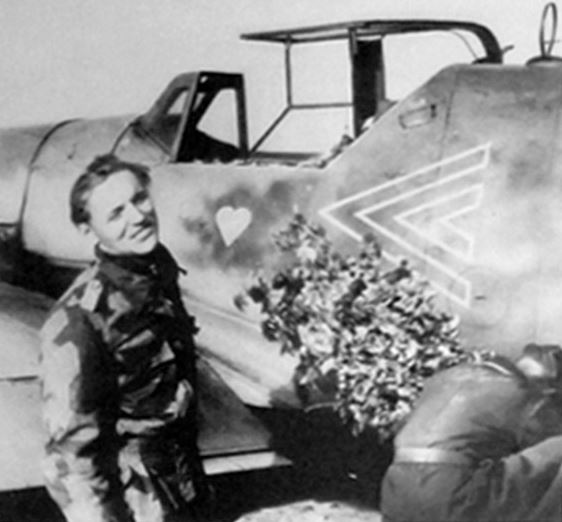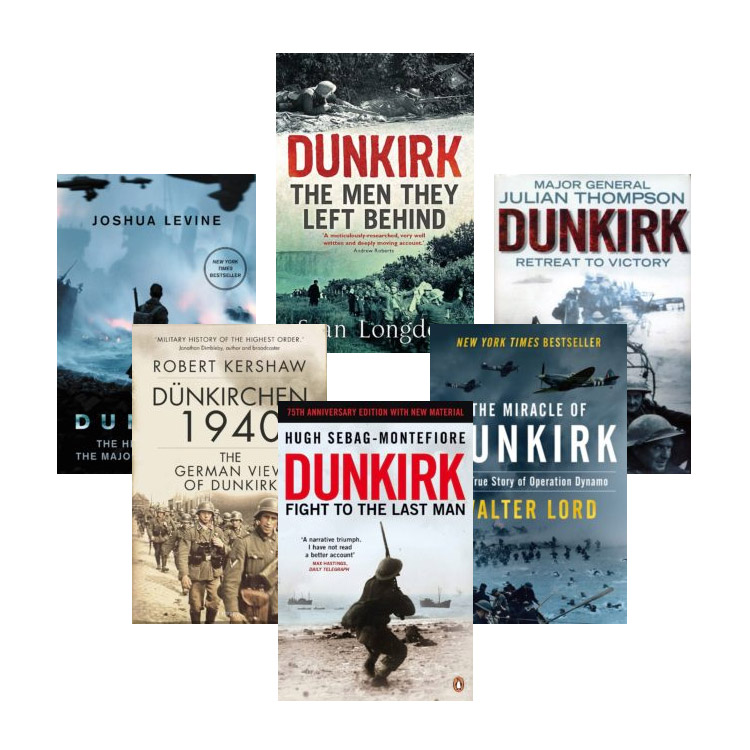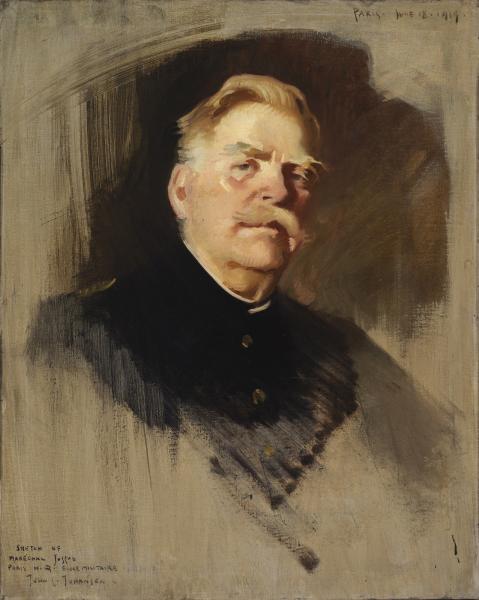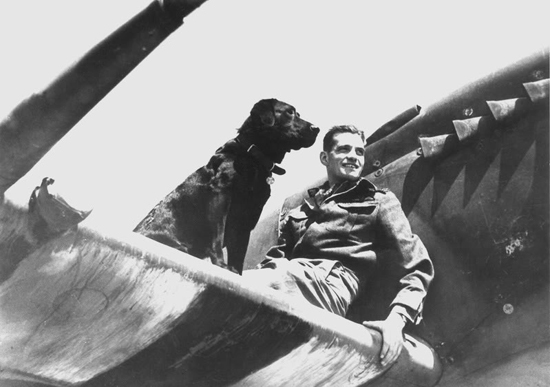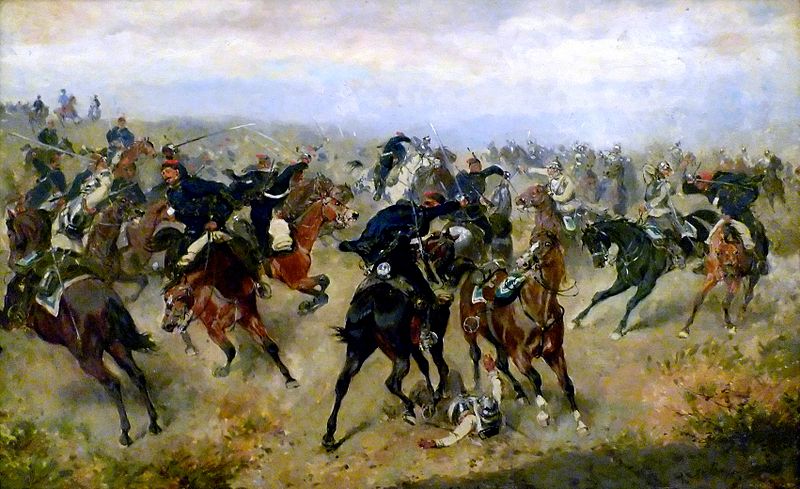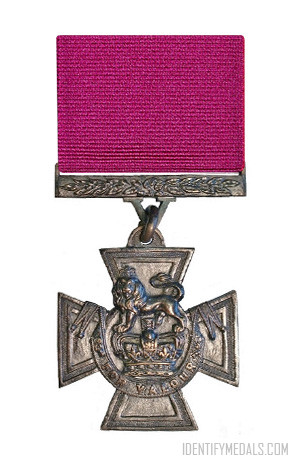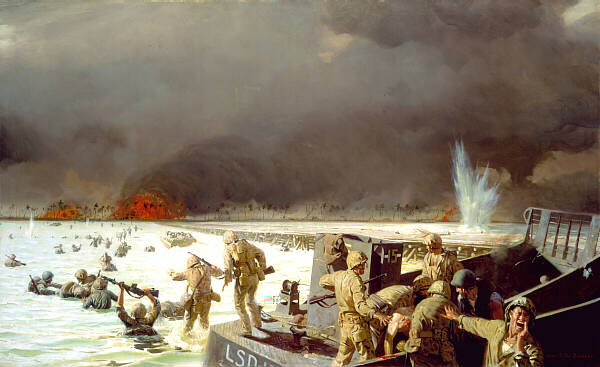If you aren’t a U.S. Marine, you’ve probably never heard the name John Basilone before. He’s quite a legend in the United States Marine Corps and should be for the general population as well because of his incredible feats. The only Marine in World War II to receive the two highest U.S. military medals—the Medal of Honor and the Navy Cross, John Basilone is an excellent example of a U.S. Marine and a fighter well deserving of the medals he received.
Who Was John Basilone?
Born on November 4, 1916 in Ruritan, New Jersey, Basilone was the six of ten children in an Italian family and would grow up as a tough young man. Just before his 18th birthday, Basilone enlisted in the U.S. Army and served in the Philippines as an infantryman from 1934 to 1937. He would become known as “Manila John” due to his Army service in the Philippines.
Basilone as Field Cook
Before becoming known for his heroic actions in combat, Basilone served as a field cook in the United States Marine Corps. While stationed at various bases, including Quantico and Parris Island, he worked in the mess hall, preparing meals for his fellow Marines. This experience as a field cook provided Basilone with valuable skills and insights that would later serve him well during his combat deployments.
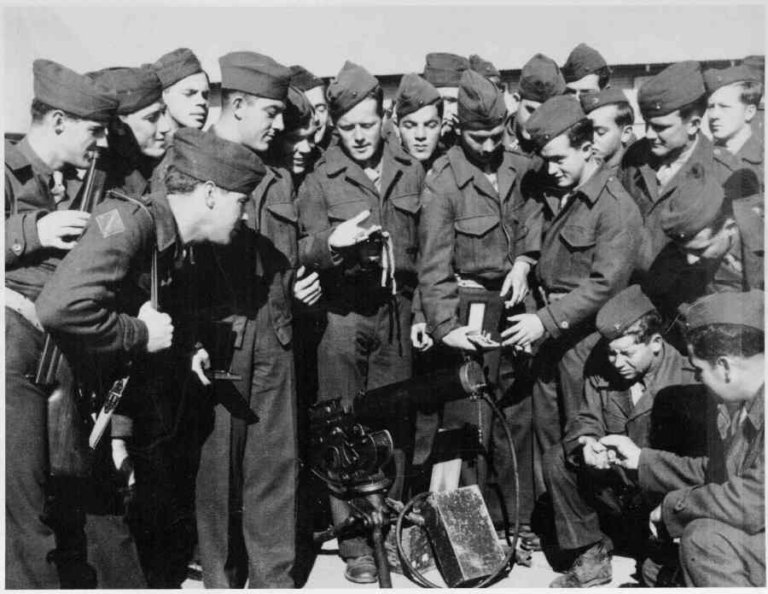
During his time there, Basilone became a champion boxer and absolutely adored life in the Philippines. Thus, when he returned to the States in 1937 and started working as a truck driver, it was not the life Basilone longed to leave, so he enlisted in the Marine Corps on June 3, 1940, in hopes of returning to his beloved Philippines.
Basilone was deployed to Guantanamo Bay, Cuba before he took part in the invasion of Guadalcanal in the Pacific, where he would achieve his renown. From August 1942 on, Basilone and his unit—1st Battalion, 7th Marines of the 1st Marine Division—were tasked with fighting the Japanese deep in the jungles of Guadalcanal, one of the hundreds of islands that comprise the Solomons.
John Basilone's Extraordinary Heroism
(And the Military Medals He Received)
Late in the fall on the night of October 24, 1942, Basilone who was then a sergeant, was responsible for commanding two heavy caliber fire sections (.30-caliber machine gun) from 1/7 that had the task of holding a narrow pass at Tenaru River. A Japanese regiment that numbered 3,000 men began to attack the small crews of Marines as they dug in for the night with grenades and mortar fire. The Marines successfully held off the attack until one gun crew was disabled by enemy fire.
As Basilone’s Medal of Honor citation notes, Basilone carried roughly 90 pounds of weaponry and ammunition to the disabled gun pit, running a distance of 200 yards through enemy fire with total disregard for his own life. As he ran, Basilone killed several Japanese soldiers with his Colt .45 pistol.
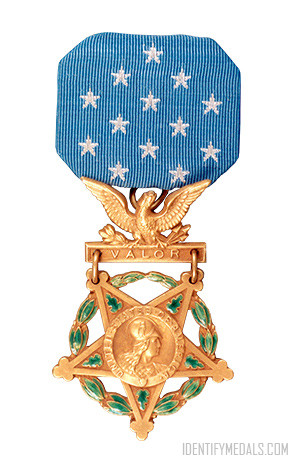
The U.S. Medal of Honor
The Medal of Honor is the United States of America’s most prestigious personal military decoration, awarded for acts of valor.
John Basilone’s Citation for his Congressional Medal of Honor (Guadalcanal):
For extraordinary heroism and conspicuous gallantry in action against enemy Japanese forces, above and beyond the call of duty, while serving with the 1st Battalion, 7th Marines in the Lunga Area, Guadalcanal, Solomon Islands, on 24 and 25 of October 1942. While the enemy was hammering at the Marines defensive positions, Sgt. Basilone, in charge of 2 sections of heavy machine guns, fought valiantly to check the savage and determined assault. In a fierce frontal attack with the Japanese blasting his guns with grenades and mortar fire, one of Sgt. Basilone’s sections, with its “gun crews”, was put out of action, leaving only 2 men able to carry on. Moving an extra gun into position, he placed it in action, then, under continual fire, repaired another and personally manned it, gallantly holding his line until replacements arrives. A little later, with ammunition critically low and the supply lines cut off, Sgt. Basilone, at great risk to his own life and in the face of continued enemy attack, battled his way through hostile lines with urgently needed shells for his gunners, thereby contributing in large measure to the virtual annihilation of a Japanese regiment. His great personal valor and courageous initiative were in keeping with the highest traditions of the U.S. Naval Service.
Franklin D. Roosevelt
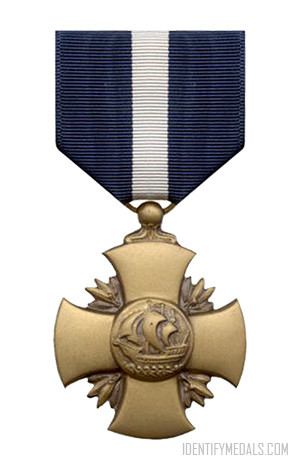
The Navy Cross
The Navy Cross is the United States military’s second-highest decoration and awarded to members of the Navy, Marine Corps, and Coast Guard.
John Basilone’s Citation for his Navy Cross (Iwo Jima):
“For extraordinary heroism while serving as a leader of a Machine-Gun Section of Company C, First Battalion, Twenty-Seventh Marines, Fifth Marine Division, in Action against enemy Japanese forces on Iwo Jima in the Volcano Islands, 19 February 1945. Shrewdly gauging the tactical situation shortly after landing when his company’s advance was held up by the concentrated fire of heavily fortified Japanese blockhouse, Gunnery Sergeant Basilone boldly defied The smashing bombardment of heavy caliber fire to work his way around the flank and up to a position directly on top of the blockhouse and then, attacking With grenades and demolitions, single-handedly destroyed the entire hostile strongpoint and its defending garrison. Consistently daring and aggressive as he fought his way over the battle-torn beach and up the sloping, gun-studded terraces toward Airfield Number One, he repeatedly exposed himself to the blasting fury of exploding shells and later in the day coolly proceeded to the aid of a friendly tank which had been trapped in an enemy mine field under intense mortar and artillery Barrages, skillfully guiding the heavy vehicle over the hazardous terrain to safety, despite the overwhelming volume of hostile fire. In the forefront of the assault at all times, he pushed forward with dauntless courage and iron determination until, moving upon the edge of the airfield, he fell, instantly by a bursting mortar shell. Stout-hearted and indomitable, Gunnery Sergeant Basilone by his intrepid initiative, outstanding professional skill and valiant spirit of self-sacrifice in the face of fanatic opposition, contributed materially to the advance of his company during the early critical period of the assault, and his unwavering devotion to his comrades and reflects the highest credit upon Gunnery Sergeant Basilone and the United States Naval Service.”
For a total of three days, Basilone ran back and forth between gun pits, supplying ammunition and assisting the junior Marines. He even lost his asbestos gloves, which were gloves used to hold or switch the hot barrels of the heavily used machine guns. Undeterred, Basilone used his bare hands to remove the barrel of his machine gun and take out an entire wave of Japanese soldiers during the height of the battle even though he burned his hands and arms in the process.
By the time reinforcements arrived for the Marines, Basilone and his gun crews had thwarted the entire Japanese regiment, but at great cost: only Basilone and two other Marines were left standing. Basilone himself killed at least 38 enemy soldiers, using the machine guns, his pistol, and even a machete.
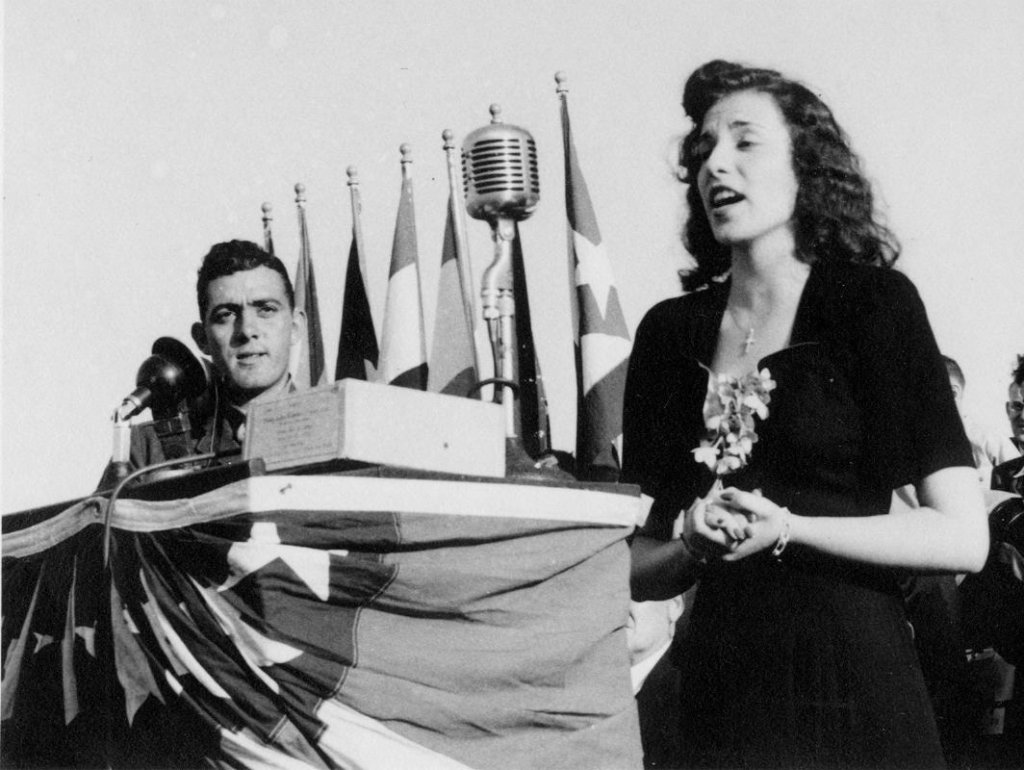
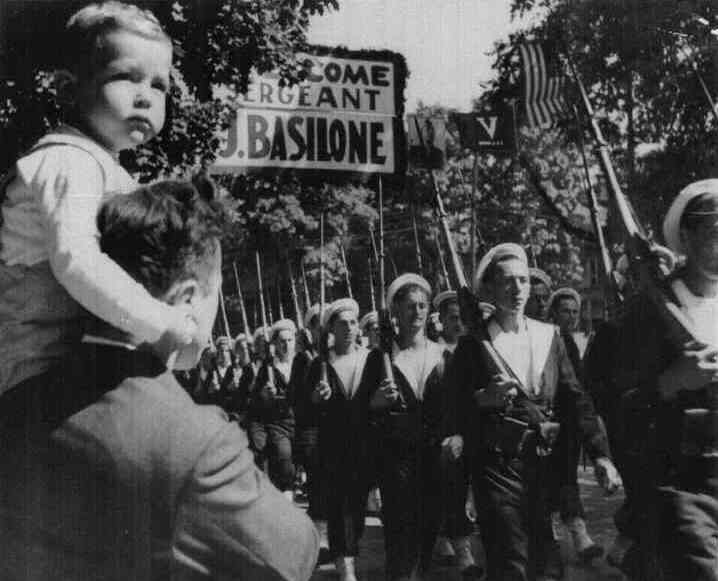
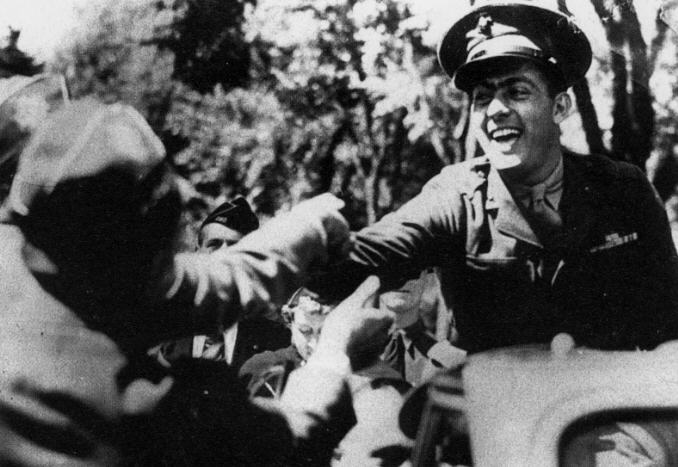
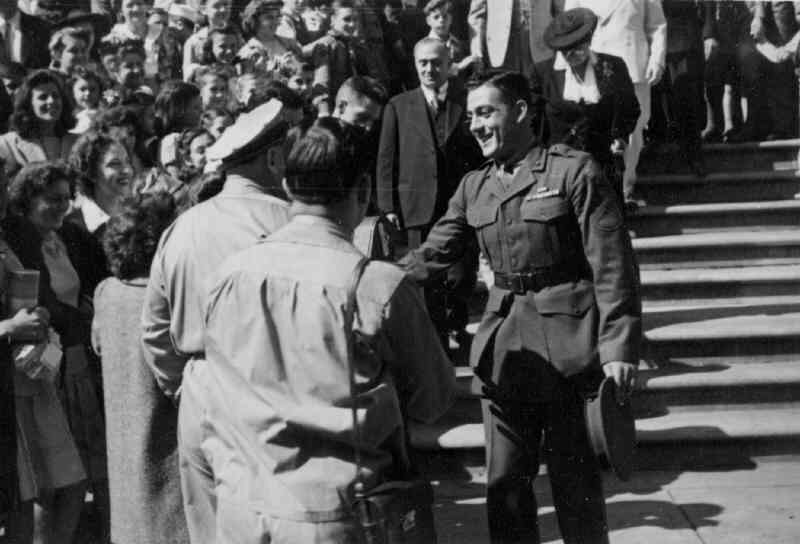
Due to his great acts of valor, he was awarded the Medal of Honor and promoted to Gunnery Sergeant Johh Basilone, becoming the first enlisted U.S. Marine to earn the Medal of Honor during World War II. He refused an opportunity to have President Franklin D. Roosevelt bestow the medal and instead opted to have the ceremony in the field with his unit.
As Basilone would note, “Only part of this medal belongs to me. Pieces of it belong to the boys who are still on Guadalcanal.”
John Basilone's Return Home
Basilone returned home to the United States for a homecoming parade in his hometown on September 19, 1943, and began to participate in war bond tours to raise money for the war effort. Even so, Basilone hated being away from his unit and the fighting and kept requesting to return to the Pacific, turning down a commission and an instructor position to get back with his men. He never completely liked all the attention from receiving the Medal of Honor. Basilone just wanted to be a plain Marine allegedly saying, “I ain’t no officer and I ain’t no museum piece. I belong back with my outfit.”
Basilone was sent to Camp Pendleton in California to complete additional training for combat in the Pacific where he ended up meeting his wife, a fellow Marine Sergeant named Lena Mae Riggi. The two would wed on July 10, 1944.
Basilone and Lena Liggi
Sgt Lena Mae Riggi Basilone played a significant role on the home front, supporting her husband and actively participating in war bond drives and other patriotic efforts. She, in fact, became a symbol of resilience and strength for many Americans during the war and left a lasting impact on the legacy of John Basilone and the spirit of American patriotism.
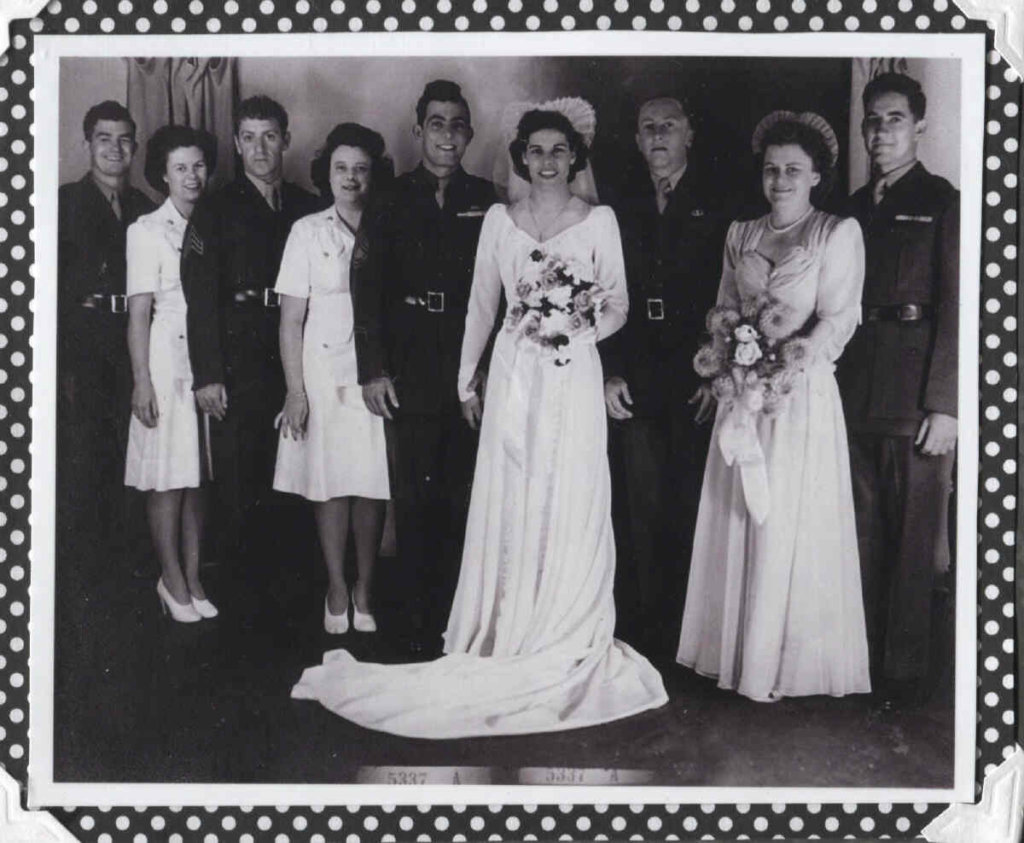
Basilone And The 5th Division
In December 1944, Basilone returned to the Pacific, headed toward Iwo Jima. Serving with the 1st Battalion, 27th Marines, 5th Marine Division, Basilone stormed Red Beach on Iwo Jima on February 19, 1945. Leading his gunners up the steep black sand, Basilone and his unit were pinned down by enemy machine gun fire. As in Guadalcanal, Basilone started attacking a heavily-fortified blockhouse with grenades and demolitions, single-handedly destroying an enemy strong point. He fought his way toward an airfield and assisted a Marine tank trapped in an enemy mine field, guiding the vehicle over the deadly terrain to safety even though he was under intense mortar and artillery barrages. At the edge of the airfield, Basilone was killed by enemy Japanese forces due to mortar shrapnel, dying at the age of 28.
For his brave actions during the invasion, Basilone would posthumously receive the Purple Heart and the Navy Cross, becoming the only enlisted Marine in World War II to earn the Navy Cross posthumously. He received the Navy Presidential Unit Citation with one star, the American Defense Service medal with one star, the American Campaign medal, the Asiatic-Pacific Campaign medal, and the World War II Victory medal.
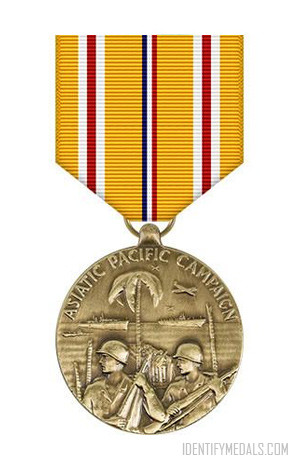
The Asiatic-Pacific Campaign Medal
The Asiatic–Pacific Campaign Medal was awarded to any U.S. Armed Forces member who had served in the Asiatic-Pacific Theater during WW2.
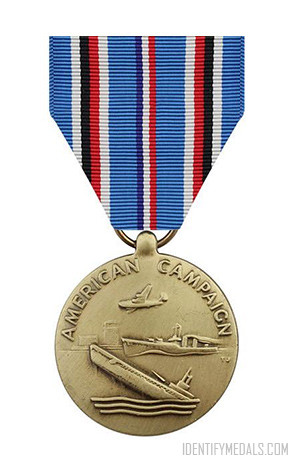
The American Campaign Medal
The American Campaign Medal is a United States Armed Forces military award created on November 6, 1942.
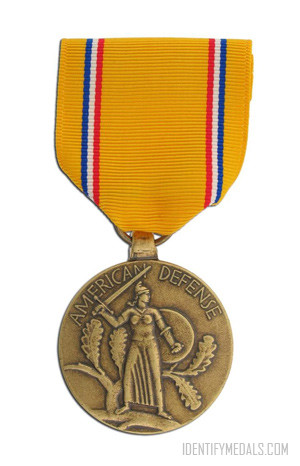
The American Defense Service Medal
The American Defense Service Medal is a United States Armed Forces military award established by President Franklin D. Roosevelt in 1941.
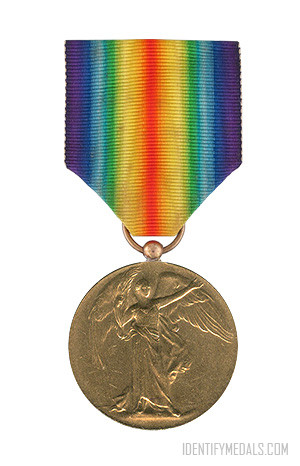
The Inter Allied Victory Medal (Great Britain)
The Victory Medal (also known as Inter-Allied Victory Medal) is a United Kingdom and British Empire First World War campaign medal.
Other Accolades by John Basilone
In addition to his numerous medals, Basilone has received other accolades. In 1945, the U.S. Navy named a destroyer after Basilone, which his wife christened. His wife would never remarry and died at the age of 86 in 1999. She was buried wearing her wedding ring.
Additionally, Basilone was a central character in the HBO series The Pacific, appeared in the “Distinguished Marines” postage stamp series, and has another destroyer named after him—John Basilone—scheduled for commission in 2019. You can find Basilone’s grave in Section 12, Grave 384 in Arlington National Cemetery.
Truly a Marine to whom all Marines aspire and an incredible individual that we can all admire, John Basilone is an excellent example of the brave men and women who fought and died in World War II.
Sources:
Guest Contributor: Rachel Basinger is a former history teacher turned freelance writer and editor. She loves studying military history, especially the World Wars, and of course military medals. She has authored three history books for young adults and transcribed interviews of World War II veterans. In her free time, Rachel is a voracious reader and is a runner who completed her first half marathon in May 2019.

